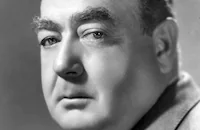Alias Jimmy Valentine
Cast & Crew
Edmund Mortimer
Bert Lytell
Vola Vale
Eugene Pallette
Wilton Taylor
Marc Robbins
Film Details
Technical Specs

Synopsis
While serving a term in prison, safecracker Lee Randall, alias Jimmy Valentine, is recognized by visiting reformer Rose Lane as a man who once protected her from assault. Rose's interest sparks Jimmy's reform, and with the help of her uncle, a pardon is secured. Jimmy takes a position in a bank of which Rose's father is president; after three years of honest employment Jimmy proposes marriage to Rose. However, the couple's happiness is threatened by the appearance of hard-boiled Detective Doyle, who believes Jimmy guilty of an earlier Massachusetts bank robbery. Jimmy devises such a clever alibi that Doyle finally thinks himself mistaken. Before Doyle leaves, Rose's small sister is accidentally locked in a new bank vault. Although he knows he is convicting himself, Jimmy cracks the vault in the detective's presence without hesitation. Impressed by this altruism, Doyle drops his investigation and leaves Jimmy to his future wife and happiness.

Cast
Bert Lytell
Vola Vale

Eugene Pallette
Wilton Taylor
Marc Robbins
Robert Dunbar
Winter Hall
James Farley
Fred Kelsey
Crew

Film Details
Technical Specs

Quotes
Trivia
Notes
The play was based on O. Henry's short story "A Retrieved Reformation," published in Cosmopolitan Magazine in April 1903. Scenes from the film were shot at the Arizona State Penitentiary in Florence, AZ. Ripley appears to have started directing the film, but Mortimer is credited as director in the few trade reviews that give a director's credit. A contemporary trade article states that Mary Beaton was brought to Hollywood to act in the film; it is unclear whether she appeared in the released version. Another contemporary trade article lists six people who worked on the film in some capacity: Nate Watt, Jack Huddleston, Ben Critchley, Mrs. Mayon, Clyde Dunbar and Frank Williams. Mrs. Mayon May be the actress Florence Mayon. One modern source lists Nellie Anderson as a cast member. For information on other films based on Armstrong's play, see listing above for the 1915 World Film Corp. version.












